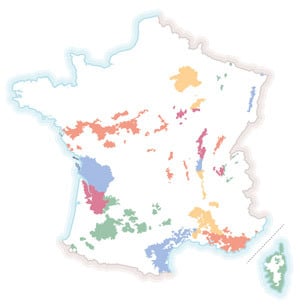
Contents
During tastings, we often hear talk of a “finish” or “end of mouth”, but what does this imply? How can you tell? How can we objectify it? We’ll see about that!
Definition
The finish is the set of sensations detected in the mouth that remain once the wine has been swallowed, or spat out if you’re sensible.
Among the sensations perceived when a wine is taken in the mouth are, of course, the flavors and their intensity, but also what makes up the body of a wine, i.e. tannins, sweetness and alcohol, which will tend to make a wine heavier, and acidity, which will, on the contrary, tend to make it lighter.
Wine length
When we talk about the finale, we need to mention the length, which is intimately linked to it. Determining the persistence of pleasant sensations once the wine has been swallowed helps to determine the wine’s length.
To calculate this length precisely, a unit of measurement exists: the caudalie, which corresponds to one second. If the sensations and flavors disappear quickly, we speak of a short finish; if, on the contrary, they remain for, say, ten caudalies or more, we speak of a long finish. Some very expressive wines of remarkable quality have more than twenty caudalies!
Quality indicator
The persistence of these sensations is a true indicator of quality. In fact, only pleasant perceptions should be taken into account when determining the length of a wine and talking about its finish. If unpleasant sensations remain once the wine has been swallowed, we speak of an aftertaste, such as a bitter aftertaste.
However, the finish is not the only indicator of a wine’s quality. In fact, aromatic intensity and complexity, and the balance between fruitiness and sugar on the one hand, and acidity and tannins on the other, are equally important!




